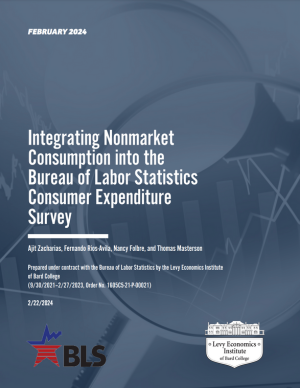
Publications
Time to Bail Out: Alternatives to the Bush-Paulson Plan
While serving as chairman of the Federal Reserve Board, Alan Greenspan advocated unsupervised securitization, subprime lending, option ARMs, credit-default swaps, and all manner of financial alchemy in the belief that markets “work” to reduce and spread risk, and to allocate it to those best able to assess and bear it—in his view, markets would stabilize in the absence of nasty government intervention. But as Greenspan now admits, he could never have imagined the outcome: a financial and economic crisis of biblical proportions.
The problem is, market forces are not stabilizing. Left to their own devices, Wall Street wizards gleefully ran right off the cliff, and took the rest of us with them for good measure. The natural instability of market processes was recognized long ago by John Maynard Keynes, and convincingly updated by Hyman P. Minsky throughout his career. Minsky’s theory explained the transformation of the economy over the postwar period from robust to fragile. He pointed his finger at managed money—huge pools of pension funds, hedge funds, sovereign wealth funds, university endowments, money market funds—that are outside traditional banking and therefore largely underregulated and undersupervised. With a large appetite for risk, managed money sought high returns promised by Wall Street’s financial engineers, who innovated highly complex instruments that few people understood.
In this new Policy Note, President Dimitri B. Papadimitriou and Research Scholar L. Randall Wray take a look back at Wall Street’s path to Armageddon, and propose some alternatives to the Bush-Paulson plan to “bail out” both the Street and the American homeowner. Under the existing plan, Treasury would become an owner of troubled financial institutions in exchange for a capital injection—but without exercising any ownership rights, such as replacing the management that created the mess. The bailout would be used as an opportunity to consolidate control of the nation’s financial system in the hands of a few large (Wall Street) banks, with government funds subsidizing purchases of troubled banks by “healthy” ones.
But it is highly unlikely that relieving banks of some of their bad assets, or injecting some equity into them, will increase their willingness to lend. Resolving the liquidity crisis is the best strategy, the authors say, and keeping small-to-medium-size banks open is the best way to ensure access to credit once the economy recovers. A temporary suspension of the collection of payroll taxes would put more income into the hands of households while lowering the employment costs for firms, fueling spending and employment. The government should assume a more active role in helping homeowners saddled with mortgage debt they cannot afford, providing low-cost 30-year loans directly to all comers; in the meantime, a moratorium on foreclosures is necessary. And federal grants to support local spending on needed projects would go a long way toward rectifying our $1.6 trillion public infrastructure deficit.
Can the Treasury afford all these measures? The answer, the authors say, is yes—and it is a bargain if one considers the cost of not doing it. It is obvious that there exist unused resources today, as unemployment rises and factories are idled due to lack of demand. Markets are also voting with their dollars for more Treasury debt. This does not mean the Treasury should spend without restraint—whatever rescue plan is adopted should be well planned and targeted, and of the proper size. The point is that setting arbitrary budget constraints is neither necessary nor desired—especially in the worst financial and economic crisis since the Great Depression.

